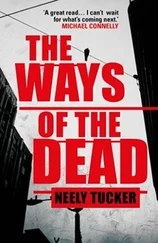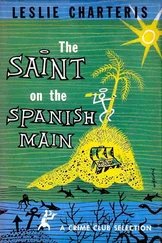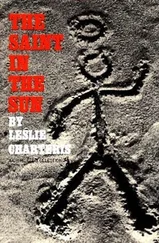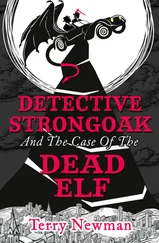It had been around Ferro that Sterling had felt the strangeness of Paulie most clearly. Paulie’s pale blue eyes avoided all faces, yet never left Ferro’s face even for a moment. Ferro had a habit of abruptly turning away from Paulie’s gaze. Sterling always felt a load lift off his chest when Ferro and Paulie drove away. The day dogs barked and howled at the four-wheel-drive truck as it passed through the succession of electric gates. Even the old boss woman and her sister did not make Sterling as uneasy as the two men did. The old boss woman had not cared about anything except that he was not an Arizona Indian. She would not hire somebody who would have hundreds of relatives nearby, dozens of in-laws who would make the ranch their second home.
Zeta had looked pleased when Sterling said he was alone in the world since his aunt Marie had died. Ferro had even asked what mail Sterling expected to receive. Ferro’s expression was indifferent as Sterling began with his railroad pension check. He did not expect letters. Then Sterling rattled off his magazine subscriptions. Ferro turned away abruptly before Sterling had finished. There was no mention of days off or trips into Tucson. After Sterling had got settled in his new job, it might be nice to go to town once in a while. He wanted to get a library card. He was curious about the town itself because Tucson had a notorious history. Besides Tom Mix, other famous people had met their downfall in Tucson. Geronimo and John Dillinger to name two. Old Mafia godfathers and their loyal lieutenants retired to Tucson where they waited for strokes to carry them away in their sleep. Sterling would like very much just to stand on the sites of these historical events.
Sometimes the Police Gazette ran specials on famous crimes of yesteryear. These had been his favorites. He had been most excited the time they had the special on Geronimo. Geronimo was included with John Dillinger and Pretty Boy Floyd and Billy the Kid. Sterling had often heard Aunt Marie and her sisters talk about the old days, and Geronimo’s last raids, when even a platoon of Laguna “regulars” had helped patrol New Mexico territory for Apache renegades. Somehow Sterling had never quite imagined old Geronimo in the same class with Bonnie Parker and Clyde Barrow. Geronimo had turned to crime only as a last resort, after Mexican army troops had slaughtered his wife and three children on U.S. territory in southern Arizona. Despite the border violations by the Mexican army and the murder of Apache women and children who had been under the jurisdiction of the U.S. Department of War, no U.S. action had ever been taken against the Mexican army. Geronimo had been forced to seek justice on his own.
But it had only been a matter of a few years before Geronimo’s second wife and another child were killed. They had been part of a small band of women, children, and old folks who had voluntarily come in from the mountains for the safety and peace promised on the grounds of Ft. Grant. Alerted to the approach of a mob of deranged white people driving buggies and wagons from Tucson, the army officer in command had sent frantic appeals to cavalry units away on patrol. But help had arrived too late to prevent the slaughter of the defenseless Apaches.
Thanks to his magazines, Sterling was aware that many famous criminals had similar grievances with the governments or communities that had failed to deliver them either protection or justice.
Of course Sterling knew there was no excuse for crime. But for Geronimo it had been war in defense of the homelands. He liked the way the Police Gazette specials took an understanding view of the criminal’s life. Still it was clear that the law did not accept any excuses. They had all died violently. Got the gas chamber or the electric chair. Or got shot down. Except for Geronimo. The specials always ran a whole page of inky, fuzzed photographs showing them after they’d been gunned down; halos of black blood around their heads; then later propped on snow-white marble slabs.
It was clear that crime did not pay. Geronimo had been one of the few famous American public enemies who had not died in an ambush or at the end of a noose. But Geronimo had been sentenced to live out his days a prisoner at Ft. Sill, Oklahoma — punishment worse than death. Geronimo and the great warrior Red Cloud had both been condemned to the gallows in their day as savages and murderers. But both had been masters of guerrilla warfare; one fighting the U.S. cavalry on the upper Great Plains, the other outrunning five thousand U.S. cavalrymen in the impenetrable desert mountains of northern Sonora. But some years later, elected for a second term, President Teddy Roosevelt had scandalized his political adversaries by inviting Geronimo, Red Cloud, and Quanah Parker to ride in his inaugural parade. To critics, Teddy Roosevelt said all a new president owed voters was a good show — precisely what he had delivered to them!
Sterling was pretty sure Cole Younger and some of the Jesse James gang had been part Indian by their looks in old photographs. Sterling knew the Starrs had been Oklahoma half-breeds. Sterling thought he was probably one of the few Indians interested in famous Indian outlaws. He knew tribal leaders and so-called Indian experts preferred that Indians got left out of that part of American history too, since their only other appearances had been at so-called massacres of white settlers.
What Sterling knew about the Great Depression of 1929 he had learned from his detective and crime magazines. The government boarding-school history teachers had seldom ever got them past the American Civil War. Sterling had been a boy during the Depression, but it had made little or no impression on people at Laguna. Most, especially the old-timers, had said they never even knew a depression was going on, because in those days people had no money in banks to lose. Indians had never held legal title to any Indian reservation land, so there had never been property to mortgage. But winters those years had been mild and wet for the Southwest. Harvests had been plentiful, and the game had been fat for the winter. The Laguna people had heard something about “The Crash.” But they remembered “The Crash” as a year of bounty and plenty for the people.
Seese got up from her lounge chair by the pool and helped Sterling unload colored rocks from the wheelbarrow. She didn’t know anything about any kind of garden, and especially not rock gardens, whatever they were. “Where did you grow up?” Sterling was on his hands and knees arranging little orange stones around the base of a jojoba bush. He was afraid to look in case Seese did not like his question. But there was the quick little laugh she gave when she was nervous, and then she said, “Oh, I grew up in a lot of places. Military family.”
“No gardens,” Sterling said, clearing away some weeds that had died since the last rain. “No gardens. Not much of anything to remember.” Seese was smoking a cigarette and staring off in the distance toward the city. Sterling could see she had one thing she never forgot, one thing always very near. “I was telling you about my magazine articles,” Sterling said. “You know, we can go see the place Dillinger’s gang got caught.”
Seese turned all the way around to face him. “Here?”
Sterling felt a big grin on his face. He nodded.
She laughed. “Okay. We’ll go tomorrow when the rest of them are gone.”
BOOK TWO. SAN DIEGO TV TALK SHOW PSYCHIC
 THERE IS CONFUSION in her dreams and memories of the child. First there is the odd dream of the snapshots of a boy, twelve or thirteen. In the dream she knows the boy is dead by the remarks others make as they look at the photographs. She is seized by the loss of him and awakens crying. She is stunned because in the dream Monte had been older, as he might look years from now. Monte would be almost two years old, wherever he was; David had kidnapped Monte when he was six months old. Seese refuses to believe he is dead. The dreams are her contact with him. She feels she has actually been with him after these dreams. She awakens crying because the odor of the baby lotion and his skin are immediate and she feels she has only just set him down in his bed. Because of these dreams she is certain he is not dead. At other times she reasons that the child probably is not alive since David spent thousands hiring detectives and paying informants. She has read about the anguish one feels as the memories of the beloved gradually recede. She knows this is to be expected. Still, she shuffles the baby pictures like a deck of cards, trying furiously to deal up just the one that will bring her back to a moment with him. She is determined to be the first not to forget. One of the few for whom the memories never dim.
THERE IS CONFUSION in her dreams and memories of the child. First there is the odd dream of the snapshots of a boy, twelve or thirteen. In the dream she knows the boy is dead by the remarks others make as they look at the photographs. She is seized by the loss of him and awakens crying. She is stunned because in the dream Monte had been older, as he might look years from now. Monte would be almost two years old, wherever he was; David had kidnapped Monte when he was six months old. Seese refuses to believe he is dead. The dreams are her contact with him. She feels she has actually been with him after these dreams. She awakens crying because the odor of the baby lotion and his skin are immediate and she feels she has only just set him down in his bed. Because of these dreams she is certain he is not dead. At other times she reasons that the child probably is not alive since David spent thousands hiring detectives and paying informants. She has read about the anguish one feels as the memories of the beloved gradually recede. She knows this is to be expected. Still, she shuffles the baby pictures like a deck of cards, trying furiously to deal up just the one that will bring her back to a moment with him. She is determined to be the first not to forget. One of the few for whom the memories never dim.
Читать дальше
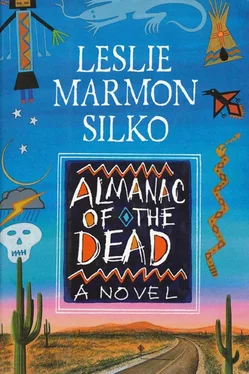
 THERE IS CONFUSION in her dreams and memories of the child. First there is the odd dream of the snapshots of a boy, twelve or thirteen. In the dream she knows the boy is dead by the remarks others make as they look at the photographs. She is seized by the loss of him and awakens crying. She is stunned because in the dream Monte had been older, as he might look years from now. Monte would be almost two years old, wherever he was; David had kidnapped Monte when he was six months old. Seese refuses to believe he is dead. The dreams are her contact with him. She feels she has actually been with him after these dreams. She awakens crying because the odor of the baby lotion and his skin are immediate and she feels she has only just set him down in his bed. Because of these dreams she is certain he is not dead. At other times she reasons that the child probably is not alive since David spent thousands hiring detectives and paying informants. She has read about the anguish one feels as the memories of the beloved gradually recede. She knows this is to be expected. Still, she shuffles the baby pictures like a deck of cards, trying furiously to deal up just the one that will bring her back to a moment with him. She is determined to be the first not to forget. One of the few for whom the memories never dim.
THERE IS CONFUSION in her dreams and memories of the child. First there is the odd dream of the snapshots of a boy, twelve or thirteen. In the dream she knows the boy is dead by the remarks others make as they look at the photographs. She is seized by the loss of him and awakens crying. She is stunned because in the dream Monte had been older, as he might look years from now. Monte would be almost two years old, wherever he was; David had kidnapped Monte when he was six months old. Seese refuses to believe he is dead. The dreams are her contact with him. She feels she has actually been with him after these dreams. She awakens crying because the odor of the baby lotion and his skin are immediate and she feels she has only just set him down in his bed. Because of these dreams she is certain he is not dead. At other times she reasons that the child probably is not alive since David spent thousands hiring detectives and paying informants. She has read about the anguish one feels as the memories of the beloved gradually recede. She knows this is to be expected. Still, she shuffles the baby pictures like a deck of cards, trying furiously to deal up just the one that will bring her back to a moment with him. She is determined to be the first not to forget. One of the few for whom the memories never dim.